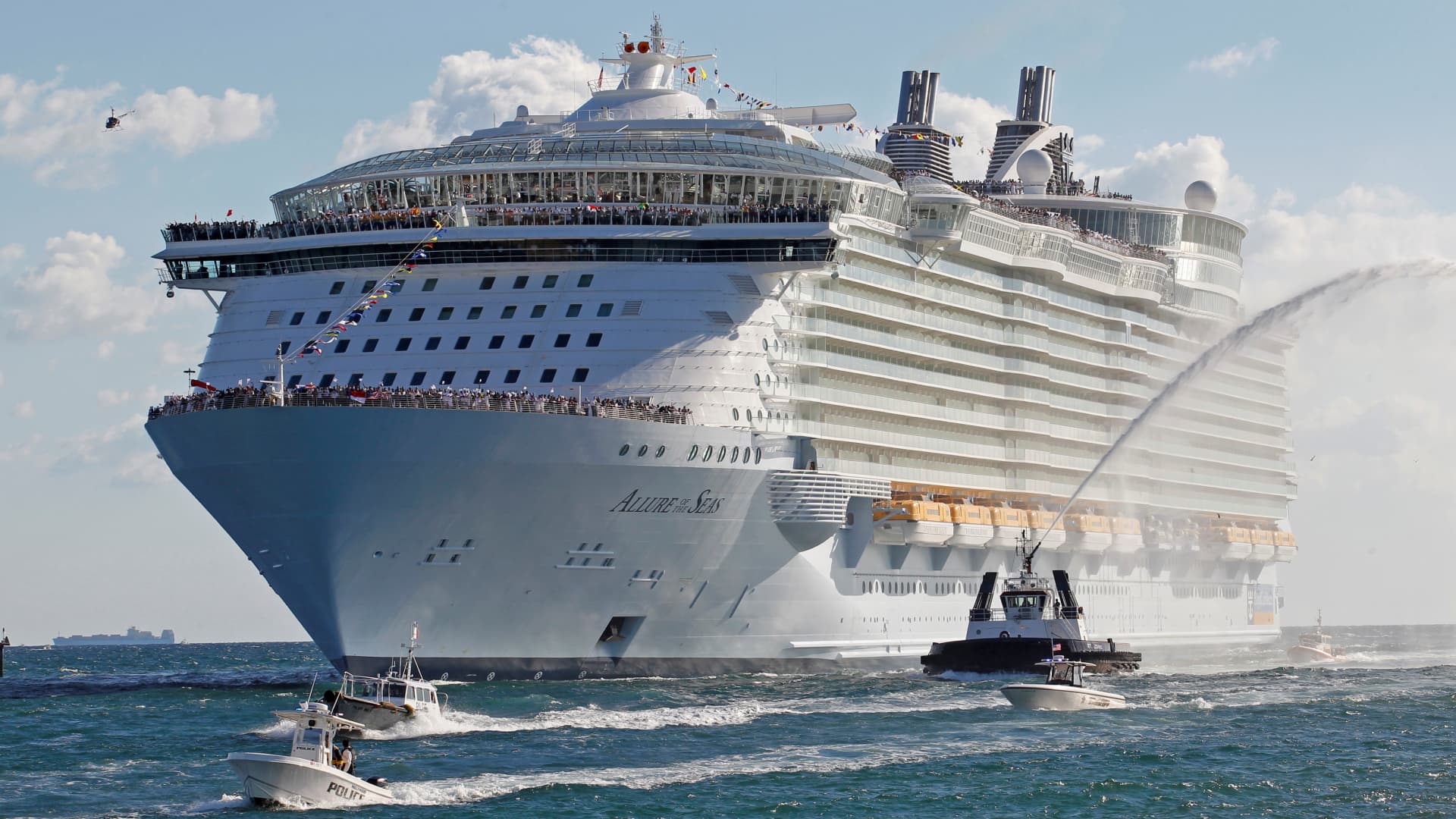Royal Caribbean’s Navigational Shift: A 2025 Financial Analysis
Introduction: Riding the Wave of Cruise Demand
The cruise industry has long been a barometer of global travel trends, and in 2025, Royal Caribbean Group stands as a testament to resilience and adaptability. The company’s second-quarter financial results, coupled with revised full-year guidance, paint a picture of robust demand and strategic foresight. This analysis explores the factors behind Royal Caribbean’s success, the challenges it faces, and the broader implications for the cruise sector.
Strong Q2 Performance: Sailing Above Expectations
Royal Caribbean’s second-quarter earnings per share (EPS) of $4.41 and adjusted EPS of $4.38 exceeded market expectations, signaling a strong rebound in the cruise industry. The company’s ability to welcome 2.3 million passengers across its brands, a 10% increase year-over-year, underscores the pent-up demand for cruise vacations. Load factors reaching 110% indicate that ships are operating at full capacity, a remarkable feat given the industry’s recent challenges.
Increased Full-Year Guidance: A Voyage Towards Higher Profits
The company’s revised full-year adjusted EPS guidance, now ranging from $15.41 to $15.55, reflects confidence in sustained demand and effective operational strategies. This upward revision from the previous forecast of $14.55 to $14.55 highlights Royal Caribbean’s ability to capitalize on market opportunities. The anticipated 31% year-over-year growth in adjusted EPS underscores the company’s strong financial trajectory.
Key Drivers of Success: Fueling the Cruise Engine
Several factors have contributed to Royal Caribbean’s financial upswing:
Surging Cruise Demand
Cruise bookings have accelerated across Royal Caribbean’s brands, driven by pent-up travel demand and the appeal of unique cruise experiences. The company has witnessed increased bookings from travelers planning trips closer to the departure date, indicating strong consumer confidence.
Effective Cost Management
Royal Caribbean has implemented effective cost management strategies, contributing to improved profitability. Lower costs, primarily due to timing, have positively impacted the bottom line.
Younger, Affluent Travelers
A growing segment of younger, affluent travelers are embracing cruise vacations, boosting revenue and onboard spending. This demographic shift bodes well for the long-term growth of the cruise industry.
Joint Venture Contributions
Strategic joint ventures have played a crucial role in enhancing Royal Caribbean’s financial performance. These partnerships have expanded the company’s reach and diversified its revenue streams.
New Ship Launches
Royal Caribbean continues to invest in its fleet with the launch of new, innovative ships. These vessels attract passengers and enhance the overall cruise experience, further driving demand.
Challenges and Headwinds: Navigating Rough Seas
Despite its strong performance, Royal Caribbean faces several challenges:
Rising Costs
The delivery of new luxury cruise ships, such as “Star of,” is expected to increase costs. The company anticipates a rise of approximately 230 basis points in third-quarter costs.
Economic Uncertainty
Global economic uncertainty and potential recessionary pressures could impact consumer spending and travel demand. Royal Caribbean must remain vigilant and adapt its strategies to navigate economic headwinds.
Competition
The cruise industry is competitive, with several major players vying for market share. Royal Caribbean must continue to differentiate itself through innovative offerings and exceptional customer service.
Regional Performance: Mapping the Global Seas
Royal Caribbean’s success is also reflected in its robust regional performance:
North America
Royal Caribbean has witnessed strong demand from the North American market, driven by the popularity of Caribbean and Alaskan cruises.
Europe
The European cruise market has shown resilience, with increasing demand for Mediterranean and Northern European itineraries.
Asia-Pacific
The Asia-Pacific region remains a significant growth opportunity for Royal Caribbean, with increasing interest in cruises among Asian travelers.
Strategic Initiatives: Charting a Course for the Future
Royal Caribbean is implementing several strategic initiatives to sustain its growth trajectory:
Enhancing Onboard Experiences
The company is focused on enhancing onboard experiences with innovative entertainment, dining, and activities. These investments aim to attract new cruisers and retain existing customers.
Expanding Destination Offerings
Royal Caribbean is expanding its destination offerings with new and exciting itineraries. This strategy aims to cater to diverse traveler preferences and create unique vacation experiences.
Leveraging Technology
The company is leveraging technology to improve the customer experience, streamline operations, and enhance revenue management. Digital initiatives include online booking platforms, mobile apps, and data analytics tools.
Analyst Perspectives: Reading the Compass
Analysts have generally reacted positively to Royal Caribbean’s recent financial performance and increased guidance. However, some analysts have expressed concerns about rising costs and potential economic headwinds. Overall, the consensus view is that Royal Caribbean is well-positioned for continued growth, but the company must carefully manage its costs and adapt to changing market conditions.
Third-Quarter Outlook: Setting Sail for the Next Horizon
Royal Caribbean anticipates a strong third quarter, driven by sustained demand and effective revenue management. The company expects third-quarter adjusted profit of $5.55 to $5.65 per share. However, analysts’ estimates of $5.83 per share are slightly higher, indicating potential challenges in meeting expectations.
Conclusion: Smooth Sailing Ahead?
Royal Caribbean Group’s strong second-quarter results and increased full-year guidance underscore its ability to navigate the complex cruise industry landscape. Surging demand, effective cost management, and strategic initiatives have propelled the company’s financial performance. While challenges such as rising costs and economic uncertainty remain, Royal Caribbean appears well-equipped to sustain its growth trajectory and deliver value to its shareholders. By focusing on innovation, customer experience, and operational excellence, Royal Caribbean is charting a course for continued success in the dynamic world of cruise travel.












